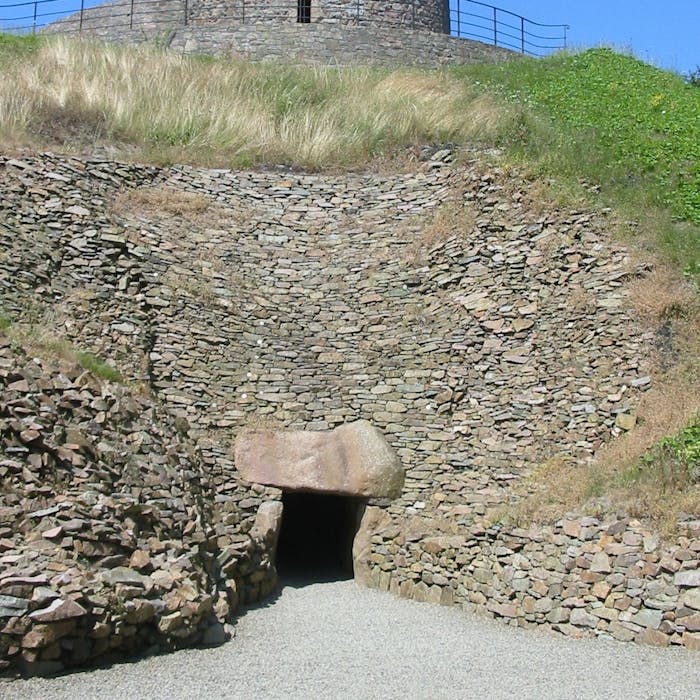
La Hougue Bie - an ancient burial mound in Jersey
La Hougue Bie is a passage and burial chamber secreted beneath a mound of stones and earth in the Jersey parish of Grouville. It is thought to be around 6000 years old.
The name is derived from the Old Norse of the Vikings – haugr meaning a mound and byr is thought to mean a building. There is an old stone chapel on top of the mound. The burial passage itself is one of the ten oldest buildings in the world.
The La Hougue Bie passage grave was constructed by some of Jersey’s earliest inhabitants, as both a tomb and a place for the living to engage in rituals and ceremonies.
Unlike many other dolmens, visitors can stand inside its chamber and feel the atmosphere of this once sacred space. The tomb is aligned that the interior is illuminated by the rising sun on the spring and autumn equinox.
Once completed, the passage and chamber were hidden beneath a mound of stones and earth. At least eight individuals were buried here, but the structure was not primarily a tomb, but was used for various religious rites (like a church or cathedral).
When the site fell into disuse around 5,000 years ago, it was blocked up with debris and forgotten until the medieval era when a Christian chapel was constructed on top of the prehistoric mound.
When Jersey embraced the Protestant Reformation in the 16th century, the chapel above fell into secular hands. La Hougue Bie was opened as a public attraction and soon became popular as a venue for eating, drinking and dancing.
After various renovations, excavations, and halts during wartime, this ancient tomb is once more open to the public - with a museum, some World War 2 structures, and a tea shop!
Further reading
Links to external websites are not maintained by Bite Sized Britain. They are provided to give users access to additional information. Bite Sized Britain is not responsible for the content of these external websites.
